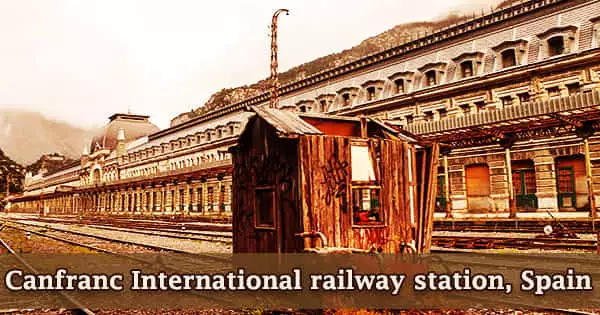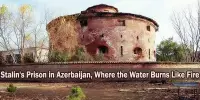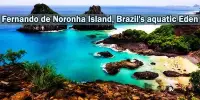Berlin is the first ghost town on record to be designated as a state park for reasons unrelated to its history as a mining site. The Berlin Historic District is located in Nye County, Nevada, and incorporates the ghost town of Berlin. Following the opening of the Berlin Mine the previous year, the town was created in 1897 as part of the Union Mining District. The fossil discovery of the amphibious beasts, Ichthyosaurs, is the town’s biggest and most important attraction today, despite the fact that the town contains plenty of evidence that it was once a living, breathing, and spirited camp.
The name is derived from Berlin, Germany, where many of the area prospectors were born. The town never thrived as much as neighboring boomtowns like Tonopah and Goldfield, and it began to collapse after the Panic of 1907. It is one of Nevada’s most isolated state parks, located 18 miles from the nearest major highway near the state’s center, at the foot of the Shoshone Mountains, and next to a portion of the Humboldt-Toiyabe National Forest.
By 1911, the town had mostly vanished, and the land was purchased by the state of Nevada in 1970 as part of Berlin–Ichthyosaur State Park. The park’s rugged 1150 acres are covered in a sparse mix of giant sagebrush, Mormon tea, rabbit brush, pinyon pine, and Utah juniper, roughly three and a half hours east of the state capital, Carson City. The atmospheric ruins of a late 19th-century ghost town, servicing a short-lived gold mine, and an exposed limestone rock-face with many intact, unexcavated ichthyosaur fossils, sheltered behind a metal structure, are both contained within the grounds.

Prospectors discovered the site about 1860, but it wasn’t until 1928 that it was recognized for its significance. The approach from the valley below provides the first sight of a mountaintop studded with historic dwellings amidst the desert brush. Visitors may find it strange that the Nevada state park is known for its fossil display of a 40-ton marine creature known as an Ichthyosaur, given its elevation of almost 6800 feet.
Many of Berlin’s old buildings still stand, and some of the town’s early citizens are buried in the town’s cemetery. At an elevation of around 6,676 feet (2,035 meters) above sea level, the village is located on the western slope of the Shoshone Range, on the edge of the Toiyabe National Forest. The park also contains the most plentiful and biggest known remains of Ichthyosaurs, an ancient marine reptile that lived 225 million years ago in a warm ocean that blanketed central Nevada. The fossils are housed in the park’s Fossil House and are protected.
The town is laid out in a U shape with an easterly entrance. The village had roughly 75 structures and 300 persons at its height. The towns of Berlin and Ione Valley are about two miles apart by road; Berlin is at the edge of the mountains, looking out over a typical broad, empty Nevada valley (Ione Valley), while the ichthyosaurs are somewhat higher in elevation, in the partially forested territory along a shallow canyon. From 1953 through 1957, the University of California undertook meticulous and comprehensive excavation operations. The state of Nevada proclaimed the area a state park as a result of their efforts.
The fossils may be seen through exterior windows or as part of a 40-minute tour that takes place within the building, but the village is fairly large, with roughly 20 structures and different mine artifacts, and takes an hour or two to explore. Berlin was a corporate town that was run by the Nevada Company until it was taken up by the state in 1970. The fossilized ruins are located just above a canyon that contains the remnants of another type of mining camp, Union, which was once a bustling mining camp just outside of Berlin. Union’s survival, like that of many other settlements of the time, was short-lived.
The National Register of Historic Places has classified this intriguing group of 100-year-old structures. A network of pathways is braided amid the desert vegetation and the collection of buildings, rusty machinery, stamp mill, and cemetery, in addition to the camping and picnic spaces. Despite having three miles (4.8 km) of tunnels, the Berlin Mine produced less than $1 million in gold and silver over its lifespan. The Diana Mine is a mining museum that links to the Berlin Mine on the fourth floor.
The buildings in Berlin have an old, weathered aspect, with rich tones of red and brown in the wood and rusted iron, and the whole appearance and surroundings are evocative of possibly the most renowned western ghost town, Bodie in California, albeit this area is considerably bigger. Some Berlin residences, like Bodie’s, still have their original contents. The mine supervisor’s home, now the park office, the assay office, and a machine shop are among the Berlin structures that have been saved. The 30-stamp mill has been stabilized, making it one of the best in the state.
Union was home to many of the miners who worked in Berlin. At the mine in Berlin, the miners went on strike. The mine was shut down by the owners, and both Union and Berlin were soon deserted. Today, Berlin is a real Nevada ghost town that has been conserved for future generations. Visitors are encouraged to stroll through the old townsite, study the various interpretive placards, gaze into the windows, and envision life in this colorful time of Nevada’s history.
















